Which RCD to install in a private house: selection example + tips for choosing
You need to think carefully and responsibly about which RCD to install in a private home.The device must have the necessary operating power and, in all technical parameters, correspond to the electrical system available in the room. How to correctly select a protection element that meets the requirements?
We'll tell you how to find a device that will function correctly for a long time. The selected model will protect your home from fire situations, protect equipment from burnout, and protect users from burns and electric shocks. A list of the best offers on the market will help you make your choice.
The content of the article:
General description and purpose of the device
The abbreviation “UZO” stands for residual current device.
The unit is used for such important purposes as:
- differential protection of a person from electric shocks at the moment of touching a household electrical appliance that, due to various circumstances, is energized;
- protecting residential property from fire caused by low-quality insulation of in-house electrical wiring.
From a physical point of view, the basic function of the device is to protect the electrical network from high leakage currents by instantly and completely shutting down the system at the moment of recording indicators exceeding the maximum permissible standards.
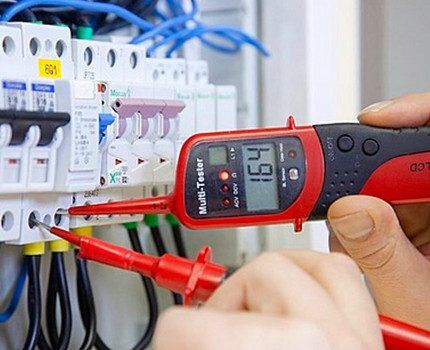
There are certain requirements for installing and using the module. You can learn about them clearly and in detail in the relevant documents, for example, in the latest editions of the PUE or in brochures describing the current series of standards for electrical installations of buildings IEC 60364 and the impact of electric current on people IEC 60479-1.
Design features of devices
The residual current device is not too complicated and consists of only four main working elements, such as:
- differential current transformer;
- a special mechanism responsible for breaking the connected circuit;
- electromagnetic type relay;
- test node.
Opposite windings - zero and phase - are connected to the transformer device. When the network operates in normal standard mode, conductors in the area of the transformer core control magnetic fluxes, which are initially in the opposite direction.
By type of design residual current devices are divided into electromechanical and electronic. Products of the first type are a simplified type of safety module, and are triggered immediately upon initial detection of a current leak, regardless of what voltage is currently available in the network.

For correct operation, the device does not require an external power source. It has good operational stability, since it does not have any electronic parts in its design that can be damaged or burned when the network is overloaded or as a result of sudden power surges.
It is quite cheap and is sold in almost any store that sells an assortment for household needs or the construction of electrical networks. It works reliably and for a long time, without requiring complex additional maintenance.
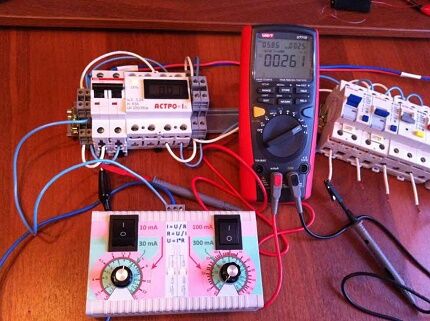
The electronic type RCD is a more modern control module and is equipped with sensitive microcircuits that respond to any changes that occur in the network. It works even if the mains voltage drops, since the transformer element “notices” only the difference in current flow.
The main working element is an electronic board located inside with a special amplifier. For correct functioning, it certainly needs power supplied from an external network. If the system has a base voltage of 220 V, the protective device immediately reacts to the leak and opens.
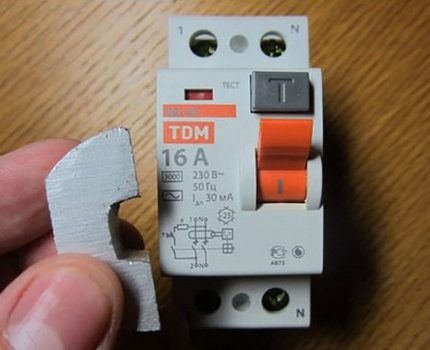
The electronic device is very sensitive and as a result of constant voltage fluctuations it can fail and lose its protective functions, and this will not be noticeable outwardly.
In order not to suffer due to this situation, experts strongly recommend that users monthly check the RCD for functionality by pressing the “Test” button located on the device body.
How does the protection device work?
The connection of the protective module to the main electrical system is always carried out after the introductory circuit breaker and an electricity meter. A single-phase RCD, designed for a network with a standard rating of 220 V, has in its design 2 working terminals for zero and phase. Three-phase units are equipped with 4 terminals for 3 phases and a common zero.
While in activated mode, the RCD compares the parameters of incoming and outgoing currents, and calculates how many amperes go to all electrical consumers in the room. When working correctly, these indicators are no different from each other.
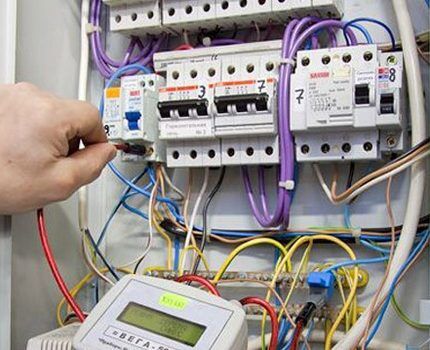
The difference between the input and output currents clearly indicates that there is an electrical leak in the house. Sometimes it occurs due to human contact with an exposed wire.
The RCD detects this situation and immediately de-energizes the controlled section of the network in order to protect the user from potential electric shock, burns and other household injuries associated with electricity.
The lowest threshold at which the residual current device is triggered is 30 mA. This indicator is called the non-release level, at which a person feels a sharp electric shock, but is still able to let go of an energized object.
At an alternating voltage of 220 V with a frequency of 50 Hz, a current of 30 milliamps is already felt very strongly and causes a convulsive contraction of the working muscles. At such a moment, the user is physically unable to unclench his fingers and throw aside a part or wire that is under high voltage.
All this leads to dangerous situations that threaten not only health, but also life. Only a properly selected and correctly installed RCD can prevent these troubles.
Classification according to operating principle
All protective devices offered today on the market of related electrical equipment and accessories differ from each other in the type of operation. AC modules are installed in systems designed to protect household appliances from surges or slowly rising voltages and are triggered by alternating current.
Products A detect a constant pulsating current that increases in steps and react precisely to it. They are usually installed in homes for individual protection against extremes and combustion of washing machines, televisions and dishwashers. They have a structurally complex structure and are much more expensive than other elements of this class.
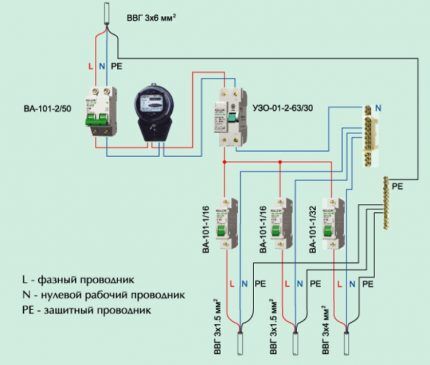
Units B are not suitable for homes or other residential areas. Their area of operation is enterprises and production workshops with a large amount of electronic equipment.
Selective devices S and G are triggered 1-4 seconds after a leak is detected. They are usually implemented in networks where several protective devices are present on one power line.
Main parameters of product selection
It is necessary to select an RCD in strict accordance with the main operating indicators of the electrical system located in the house.
Too strong protection, far exceeding the power of all household appliances available to the owners, will not cope with the task in the future and will not be able to protect the user and home from fire hazards because it will not detect a dangerous leak.
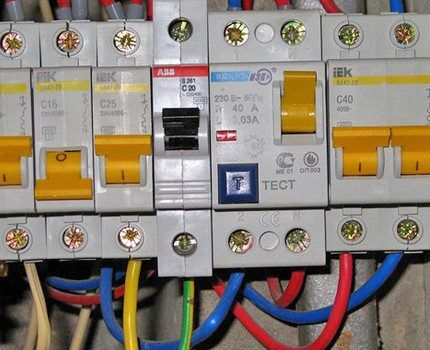
A device designed to operate at relatively small excesses simply cannot withstand a basic load. In addition, it will start to operate too often, thus causing a lot of inconvenience to the owners of the premises.
Selection by type of network voltage
Voltage 220 V is a classic indicator relevant for single-phase networks used to supply power to standard consumers. The normally permissible deviation from the indicator is within +/-5%.
According to these data, the voltage range of 209-231 V is considered optimal and does not put unnecessary stress on the system and the devices connected to it.
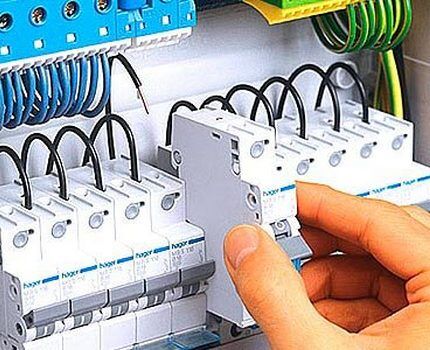
To protect such a network, usually laid in a small house, a simple RCD is used, designed for connection to a single-phase network and for minor power surges and correct operation of the circuit breakers already in the house.
Index protection device power should be an order of magnitude greater than the total total power of all household appliances available in residential premises.
In large houses with a large number of household appliances and the presence of specific electrical appliances that ensure the vital functions of the room, a more powerful and operationally stable three-phase 380 V network is often used.
A special protective device is used for it, slightly different in configuration from the standard single-phase one. The response threshold level of such a product is very high. It is placed in a special shield. There are RCDs and automatic circuit breakers in the panel are arranged in a certain order according to their purpose and selectivity rules.
The distributor, regardless of the number of floors of the building, is always located below in the area of the entrance to the house. As a rule, “S” protection is mounted on it with a certain delay time and a leakage current of 100 mA.
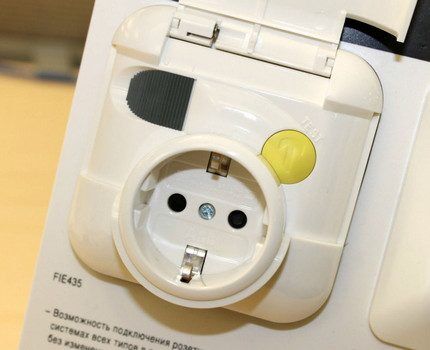
Electrical lines across floors, living rooms, technical rooms, kitchens and bathrooms are laid from an input machine. In separate rooms where, according to fire safety requirements, the leakage current cannot exceed 30 mA, an individual single-phase protective unit is installed.
Number of poles for devices
The presence of a certain number of poles for safety devices is also an important selection criterion. Bipolar products are used only in single-phase networks where it is necessary to connect one working phase and zero.
If a single-phase network is equipped with a grounding system, then the RCD is installed according to the diagrams given in our recommended article. It describes in detail the options and rules for connecting the protective equipment to phase, grounding and zero.

In three-phase systems with a base voltage of 380 W, units with four active poles are used, designed to activate zero and three phases.
Forward current level
The throughput or rated current of the RCD directly depends on the number and total power of devices and equipment connected to the electrical network.
In order for the input protective device to work correctly and not lose phase when the user simultaneously activates several units of household appliances, this indicator must be calculated for all energy-consuming modules available in the house.
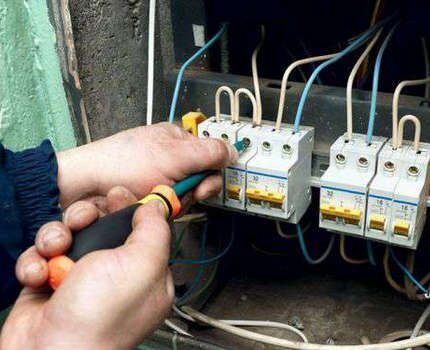
For ease of selection, manufacturers mark safety elements with numbers indicating the maximum throughput current in amperes.
Difference in leakage current
Leakage current is a certain value, upon reaching which the RCD opens the electrical circuit and stops powering the devices. This extreme threshold is called the rating and is usually 10, 30, 100, 300 and 500 Ma for different protective devices. How to install a selective RCD, you will learn from next article, the contents of which we advise you to familiarize yourself with.
A 30 mA unit is considered optimal for small private houses. It copes well with the assigned task and turns off the line when a leak is detected that does not pose a danger to human life.
Products of a lower rating are overly sensitive and will deactivate the energy supply to devices with the slightest network fluctuation. There are others reasons for knocking out the RCD, which a prudent owner should know about.
The best RCD manufacturers
The market for modern automatic equipment designed to monitor and control electrical systems is experiencing a period of active growth.Established manufacturers and promising newcomers are trying to offer the client the highest quality products with good functionality.
ABB Automatic Products
The Swiss-Swedish company ABB has confidently held the leading position in this segment for many years. Residual current devices manufactured at the company's production facilities are considered very reliable, durable and completely safe.
At the same time, in all respects they meet the latest requirements imposed in the EU for equipment and accessories of this kind.
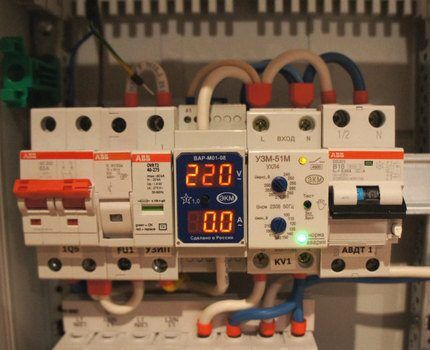
In the manufacture of its devices, the company uses innovative materials and parts with unsurpassed high operational stability. The range of models is very wide and satisfies the needs of electrical systems of any power and complexity.
What does IEK offer users?
IEK is a leading domestic manufacturer and supplier of lighting and electrical products. It has been successfully operating in the Russian and post-Soviet markets for more than 17 years. It creates a variety of high-quality equipment and provides an extended warranty for its products.
Residual current units from IEK are in great demand in Ukraine, Russia and Belarus due to the combination of optimal quality and affordable cost. The products are included in the line of budget products and allow you to equip the safety of your electrical system at a reasonable price.
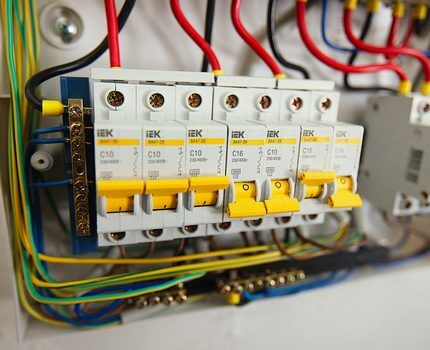
Each device fully complies with the declared characteristics and, when used correctly under the conditions described by the manufacturer, always performs for the prescribed period.
True, buyers sometimes complain that the devices have a weak plastic case that can crack or come apart if the clamping screws are tightened and often make a hum, even when there is very little load on them. But nevertheless, these disadvantages have practically no effect on IEK’s turnover, which only increases from year to year.
Nuances of products from the Kontaktor company
The Kontaktor plant is one of the largest-scale production facilities engaged in the manufacture of electrical products and related parts in Russia. Since 2007, it has been part of the group of companies that own the famous French brand Legrand. The concern specializes in the creation of lighting and electrical equipment.
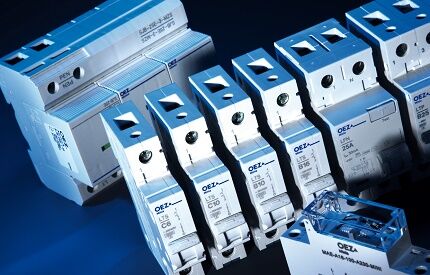
The peculiarity of the plant’s products is that they are made in the same way as at Legrand’s European enterprises, and the cost does not exceed the price of similar domestically produced devices.
Classic installation solution
Of course, in each individual case, the RCD is selected taking into account the individual characteristics of the electrical system and the household appliances present in the living room. However, there is also a universal option suitable for most average homes.
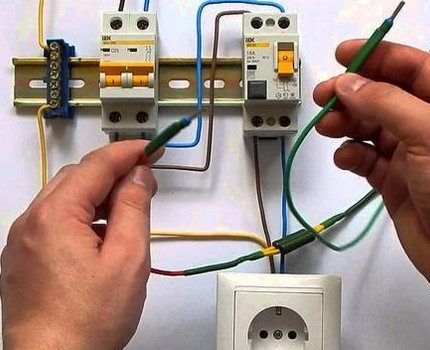
In reality, the circuit looks like this: after the input circuit breaker, a 100 mA protection device is installed first. Outgoing lines that distribute current flow directly across floors and rooms are protected by more sensitive and sensitive devices with a reading of 30 mA.
On the line supplying electricity to devices located in rooms with high levels of humidity, for example, in a bathroom, bathroom or kitchen, a 10 mA protection device is placed with a rated current no less than the current of the circuit breaker mounted in front of the RCD itself.
How does a residual current device differ from its “closest ally”, a differential circuit breaker, you will find out by reading our recommended article. It examines in detail a difficult but very interesting topic.
Conclusions and useful video on the topic
What is an RCD, why is it needed and how to correctly install this device in a private home:
Rules for choosing RCDs for residential private houses based on differentiated current and length of electrical wiring. Detailed explanation of the process from a professional master:
Installing an RCD in a private home will not require significant material investments from the owners, but will increase the safety of the electrical system, protect residents from electric shocks and burns, and protect the property from fires.
For the device to work properly, it is better to choose a reliable product from a popular brand, rather than a Chinese nameless one. You won’t be able to save money here, but the result of the proprietary module will be many times higher than that of a cheap analogue.
Tell us about how you selected a residual current device for installation in the switchboard of a country house. Share useful information that may be useful to site visitors. Please leave comments in the block below, ask questions, post photos on the topic of the article.



